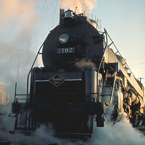Exploring the Lost Canon of ANSI Art
It's eye-opening to get a glimpse of what online life, culture, aesthetics, and graphics were like a mere 10 or 12 years ago. One of the best places to get reacquainted with the lost zeitgeist of this prehistoric, pre-Web era is by pointing your browser to one of the Web's many obscure repositories of ANSI Art. What was ANSI Art? Well, according to the Webopedia, this brief but important computer art movement owed its origin to the inclusion of a device driver called ANSI.SYS that was first bundled with MS-DOS 3.3. This driver allowed "extended screen codes", otherwise known as "escape sequences", to be used to define a series of colors that considerably spiced up MS-DOS's traditionally ominous and forbidding "jet black" screen interface. Images created in this way frequently migrated out to Bulletin Board Systems, in fact, it was the very popularity of these BBS's which created a demand for so many of them.
The easiest way to get a feel for the ANSI Art genre is at http://www.mjbdiver.com/ansi/. Here, through clever use of a Java applet, 35 early ANSI works - many of them serving as the home pages of BBS systems - are easily accessible. ANSI Art was never really accepted by "serious digital artists" (who used Macs with better resolution and higher color depths), and perhaps the state of psychological exile - imposed from within by the limitations of ANSI, and from without by the scorn of the "fine arts" Mac-heads explains the negative images we often see in ANSI collections.
At mjbdiver's site, we find more than our fair share of images reflecting situations of conflict, alienation, destruction, death,
extinction,
repression, and
isolation. Happy/positive images are frequently presented by alien presences, or as an experience that a human is enjoying in solitude (eg. fishing or walking on a beach).
Images in "Remembrance Pack", a remarkable collection of 1989-91 ANSI work by the artist SHADOW DEMON available for download at: http://www.acid.org/ftp/aaa-8991.zip explore the outer limits of abstraction possible within ANSI - to the point that some observers need to spend many minutes studying these images before being able to parse through any possible meaning. This artifact - I term it "ANSI image blanking", is caused by the fact that viewing these images locally is a very different experience than viewing them when using a slow 2,400 BPS modem - the delivery platform for which they were designed. Of course, the users experiencing these screens in 1990 or '91 had a very different experience - the screens scrolled, often at 14.4K, slowly from top to bottom, hence the consistent placement of text at the upper-left hand corner, where it would be displayed first - tipping the user off as to what was being illustrated, which appeared slowly, line-by-line, as the data was passed from the BBS to the user.
As a result of this low-bandwidth delivery method, ANSI Art became spectacularly, floridly abstract (one might even say "fauvist"). Artists like SHADOW DEMON freely used the 640 x 480 space to move and morph text to reaches of abstraction often seen in subway graffiti, but very seldome elsewhere. Blocky figures - human or otherwise - looked cartoonish in the same way that Keith Haring's subway chalk drawings were crudely symbolic - pictograms made on the fly, as temporary interfaces - pre-Web, proto-interactive experiments that existed free of any necessary expectation of permanence (Haring's early chalk drawings were literally often wiped off subway walls, often in just a few hours, by the movement of rush-hour crowds). Other examples - animated crudely, with strangely sized ASCII text elements mixed in, recall Stuart Davis, as well as just about every artist ever commissioned to design a jacket patch for the Hell's Angels. (Note: there are two "erotic" ANSI images in the aforementioned collection which might conceivably offend some people, so please do not download the pack if you are likely to be offended by these images, are under 18, etc.)
Is ANSI Art "Fine Art?". Probably not. Several fine arts institutions have actually recognized ASCII Art, a distant cousin, as worthy of curatorial respect, but never ANSI, which is likened more to digital folk art - a provisional form that had too many limitations - both technical and those resulting from the uneven design training of its artists - to make it acceptable to the digital art critic or a wider circle of enthusiasts beyond those using the systems in which it was embedded. One factor that keeps it a surpressed, or at least largely unknown digital art genre is the fact that few of the pre-Web BBS's are still running, nor are there any legitimate efforts to memorialize these systems in the same way that there are multiple efforts to memorialize the Web in projects such as the Internet Archive. Computer historians, however, see that ANSI Art tells us a lot about the state of pre-Web culture in the early 1990's - a world of BBS's, 14.Kpbs modem, and SYSOPs. Embedded in its clunky, boxy screens is a concrete representation of a common, widely-shared online experience likely to provoke a measurable shock of recognition for those using these systems in those days.
For more on ANSI Art, see History of the Underground Scene: ANSI Art, available at: http://leo.ice.org/ansi/ansiexp.html
(Note: acknowledgements need to be made to Morbus, the mysteriously influential webmaster of disobey.com, who introduced me to ANSI Art several years ago. I've been wanting to write something about the genre for some time, but never quite got around to it until now.)
Labels: ANSI Art, Pre-Google Internet, Web 1.0



